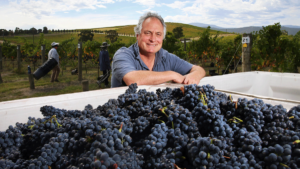Australian rare earth deposits are looking to feed into refineries that will be popping up over the next few years
Chinese companies are securing offtake from near-term producers
This leaves juniors in pole position to fill a gap in the market
“Like sands through the hourglass” – these are the days of our bottlenecked rare earths refinement capabilities. Currently, there are only two operating rare earths (REE) refineries in the world’s supply chain outside China and the rest of the world is struggling to squeeze through enough supply.
That’s changing, and it’s the how it’s changing that could just resonate for ASX juniors – especially those with projects in Australia.
Refinement issues
China refines a game-watering 87% of the world’s REEs, and other countries are looking to diversify their supply chains as well as bring online new refineries themselves.
Currently, only Canada’s Neo Performance Materials (NPM), running the Silmet refinery in Estonia, and Australia’s Lynas (ASX:LYC) Malaysian facility are in operation outside the Middle Kingdom.
NPM is still looking for REE feedstock and, according to Wood Mackenzie, is exploring several potential sources – including Australia.
Australia itself is looking to set itself up as a major producer and refiner of REEs too.
In its attempt to open Australia’s first downstream REE refining account, Iluka Resources (ASX:ILU) is constructing its $1.7bn Eneabba refinery in WA’s Mid West, with production pegged for 2026.
Leading the pack to become Australia’s next REE mine and feed into Eneabba once it’s online is Hastings Technology Metals (ASX:HAS), which is advancing towards the construction of its Yangibana deposit in WA’s Gascoyne.
To fund the project, it’s signed a toll treatment and offtake arrangement with private Chinese REE player Baotou Sky Rock Rare Earth New Material Co.
Yet that almost seems counter-intuitive, as governments across the world are scrambling to form ex-China downstream supply chains.
How they, or private Western downstream companies in the space have not looked to secure offtake agreements from such an advanced-stage project should be questioned.
The silver lining is, it just leaves another gap wide open for budding REE explorers to take advantage of.
Pollution has hindered progress
There are pollution concerns with the current refining processing of REEs. As governments keep pushing net-zero targets, companies are geared towards looking for more innovative, cheaper and cleaner ways to produce the materials.
Current solvent extraction methods used by refiners translate to high levels of emissions and waste, yet new tech is coming onto the scene that could open more doors.
One budding refiner, Canadian-listed Ucore Rare Metals, aims to process rare earths by mid-2025 using its RapidSX tech, which it reckons is three times faster than solvent extraction, doesn’t produce hazardous waste and requires just a third of the space.
“Our goal is to re-establish a North American rare earths supply chain,” Ucore COO Michael Schrider told Reuters.
There’s also South Africa’s Rainbow Rare Earths which has partnered with US-based K-Technologies to use a new continuous ion exchange tech that’s already used by some lithium producers.
A little bit lost in the world of rare earths? We’ve got your back. Check out Parts 1-3 of our REE Survival Guide here:
ICYMI Part 1 of our REE Survival Guide – Rare earths explorers are getting smarter – here’s what to look for
ICYMI Part 2 of our REE Survival Guide – How metallurgical wizardry can make or break a project
ICYMI Part 3 of our REE Survival Guide – These ASX juniors are pouring into Brazil’s rare earths scene
Australia’s wealth of rare earths
Swimming around Hasting’s Yangibana are Lanthanein Resources’ (ASX:LNR) Lyons and Dreadnought Resources’ (ASX:DRE) Yin REE projects.
Venture Minerals (ASX:VMS) and its Jupiter clay-hosted REE discovery is also nearby and recently reported an eye-whopping 48m intersection grading at 3,025ppm TREO – believed to be the highest clay-hosted REE intersection ever for an Australian project.
Arafura Rare Earths (ASX:ARU) is another frontrunner, developing its Nolans REE project in the NT and expected to produce 4,400tpa of NdPr oxide, 474tpa heavy rare earths and 144,393tpa of phosphoric acid.
It’s secured $804.9m from the federal government via debt funding and has keen interest from a range of offtake partners to aid the development of the $1.68bn project.
Proving up the North Stanmore deposit in WA’s Mid West, Victory Metals (ASX:VTM) has found high concentrations of dysprosium and terbium, confirming ‘exceptional’ ratios of 7.75% DyTb with a combined value 900% higher than the most valuable light rare earths, while extending the exploration target zone by ~51km2.
With a whopping 250Mt resource for 130,000t of contained TREO, HREO makes up 33% of the total resource and also contains high-value NdPr.
In WA’s south, OD6 Metals (ASX:OD6) is progressing well with its clay-hosted Splinter Rock and Grass Patch REE projects near Esperance and is collaborating, as others are, with the Australian Nuclear Science and Technology Organisation (ANSTO) and CSIRO on techniques to improve exploration and extraction.
In WA’s Eastern Goldfields, St George Mining (ASX:SGQ) recently confirmed further continuity of the clay-hosted REE discovery at its Destiny project.
Maiden drilling showed high-grade TREO mineralisation across a strike of 7km along the Ida Fault, a regional scale crustal shear zone gaining popularity as a control on major mineral deposits in WA.
Elsewhere in Australia
In QLD, Red Metal (ASX:RDM) believes it has discovered a rather unique REE deposit in the Mt Isa mining district.
Initial metallurgical testing at its Sybella discovery has shown the potential for it to be a heap leachable source of REE minerals with the potential for highly competitive capital and operating cost.
Junior explorer Ark Mines (ASX:AHK) is looking to prove up Sandy Mitchell in central QLD – a heavy rare earths discovery where a 144-hole Stage 1 drill program has so far turned up REE mineralisation in every metre sampled so far.
Down in South Australia’s prolific Gawler Craton, Indiana Resources (ASX:IDA) has intersected high-value magnetic rare earths with a highlight intersection of 26m 4,767ppm TREO and 1,894ppm MREO from 46m from AC drilling at its Minos prospect.
In NSW, Godolphin Resources (ASX:GRL) is continuing to explore Narraburra, which already has a 94.9Mt @ 739ppm TREO resource that includes a higher-grade zone of 20Mt @ 1,079ppm TREO.
At Stockhead, we tell it like it is. While Victory Metals, OD6 Metals, Red Metal, Indiana Resources, Godolphin Resources, Lanthanein Resources, Arafura Rare Earths, Venture Minerals and Ark Mines are Stockhead advertisers, they did not sponsor this article.
The post REE Survival Guide Part 4 – These Aussie projects aim to be ready to supply refineries… and soon appeared first on Stockhead.






















